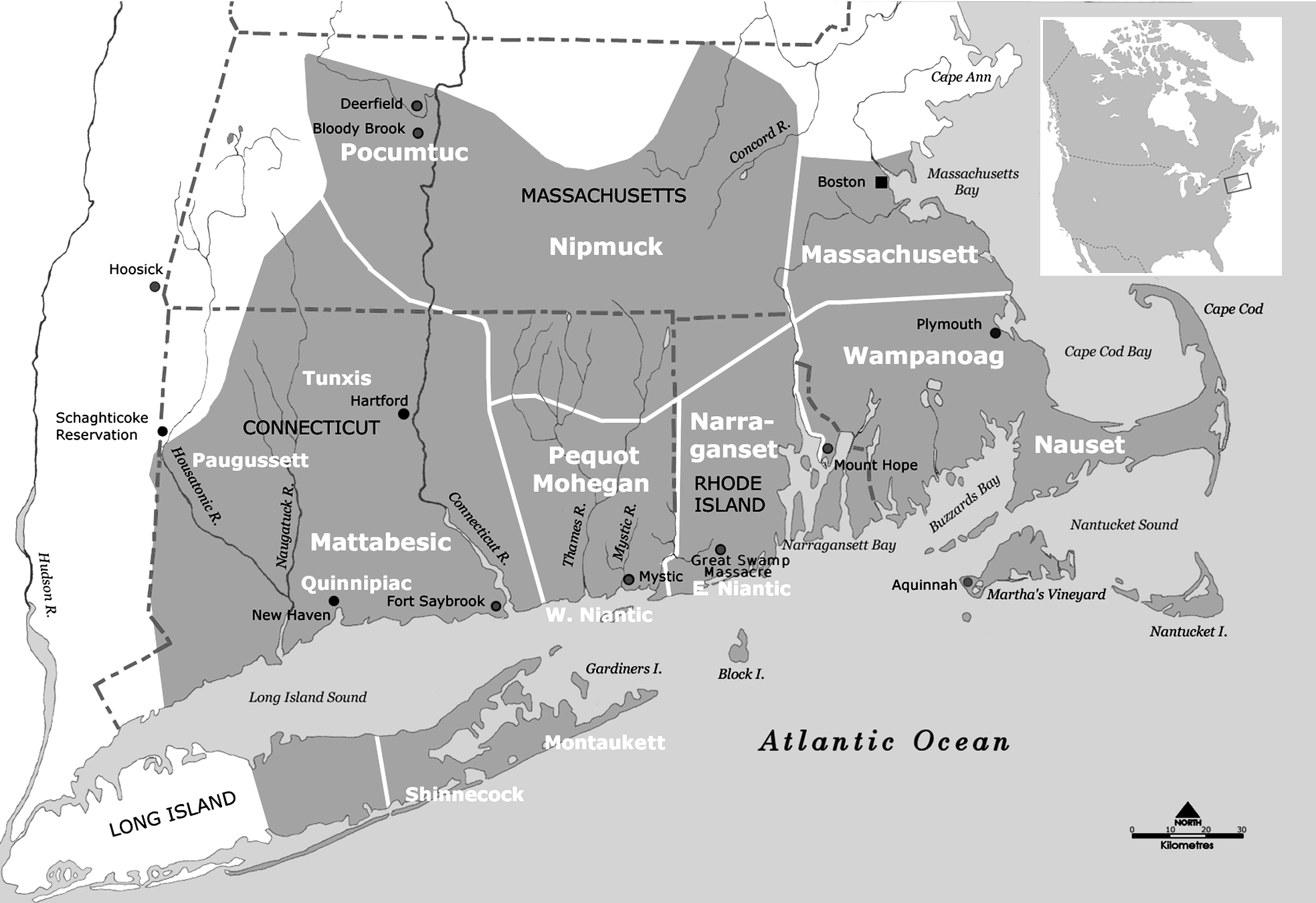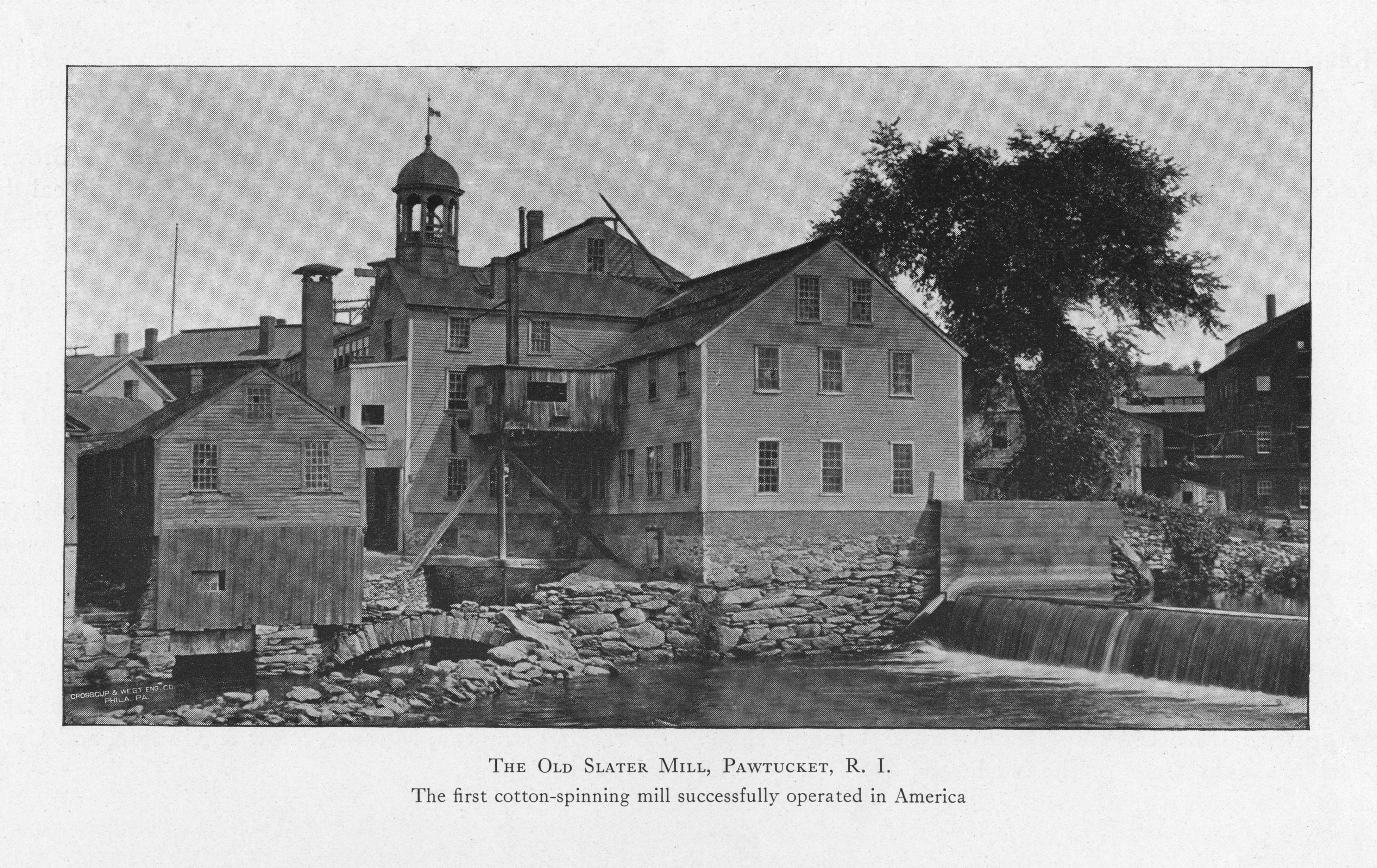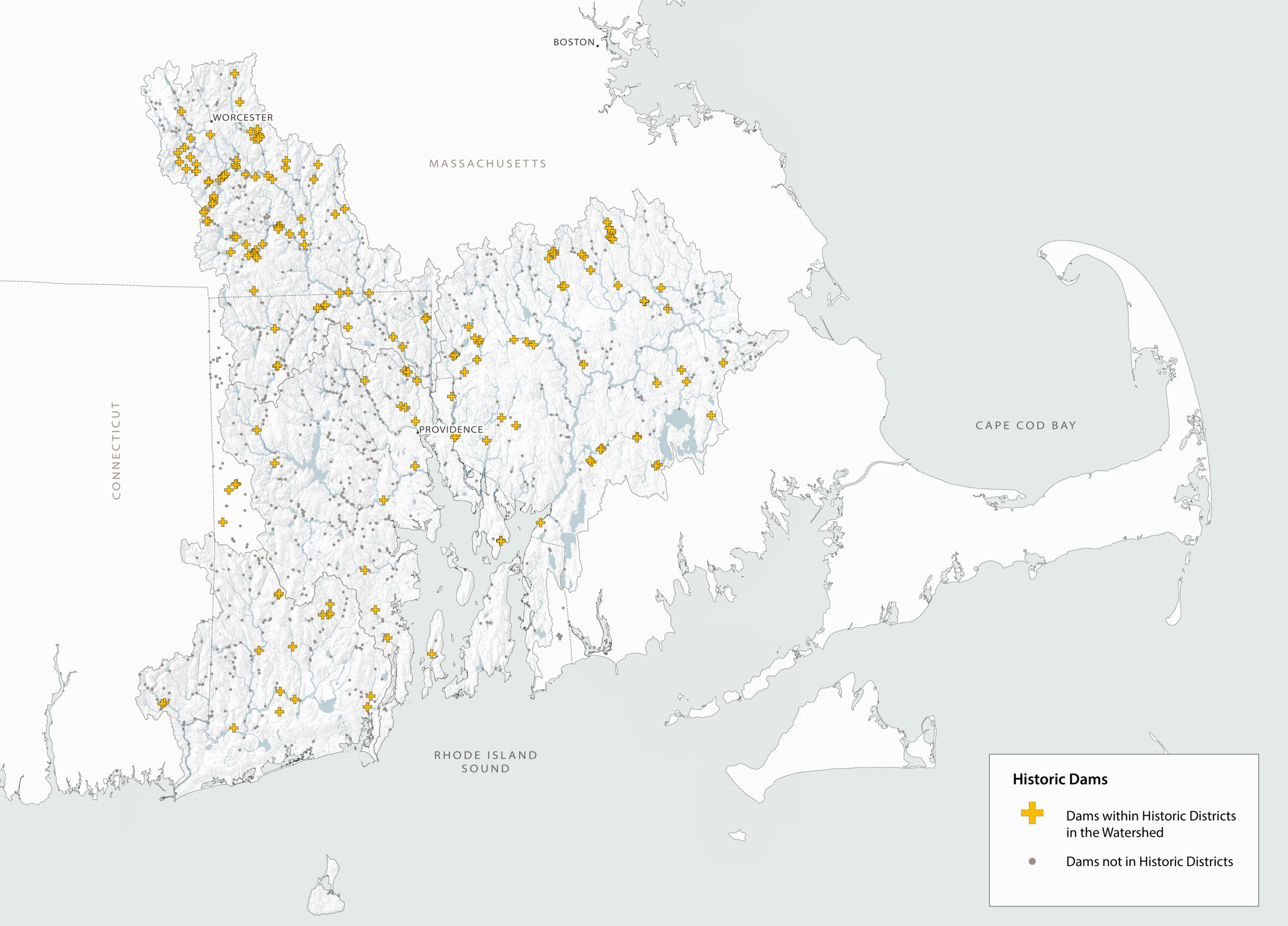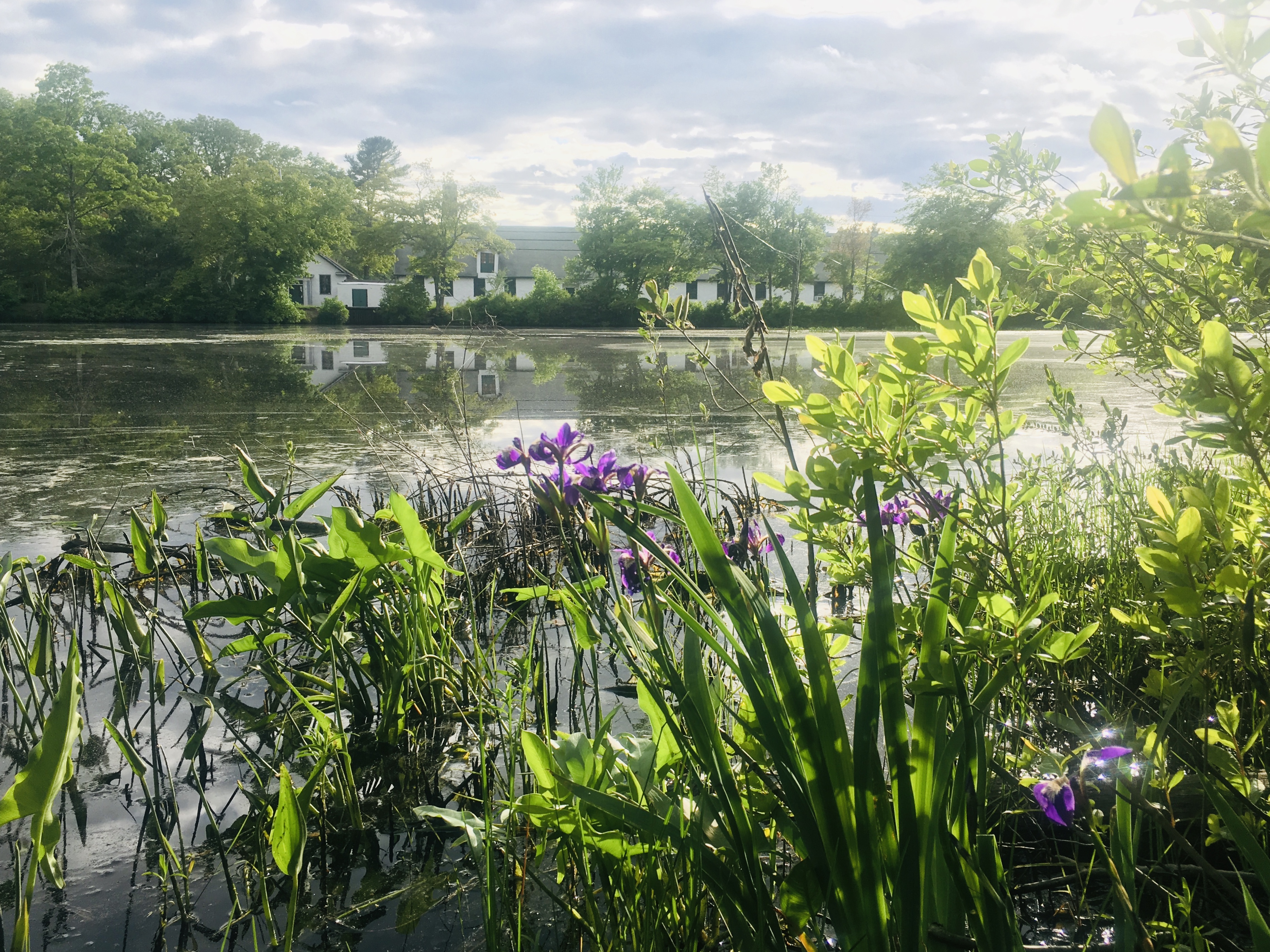History
The Narragansett Bay and coastal watersheds are the traditional homelands of the Narragansett, Wampanoag, and Nipmuc nations. Discussions surrounding the history of dams and rivers in New England often focus on the dominant colonial and industrial histories of the region. However, prior to the colonial settlement of New England, Indigenous nations had their own distinct relationship to the region’s rivers. All the tribes of the region relied heavily on rivers for transportation, fishing, and subsistence. Rivers were, and for many continue, to be considered living entities and an important aspect of cultural identity, spiritual livelihoods and lifeways of indigenous communities.

Indigenous Nations of the Narragansett Bay and coastal watersheds
Source: Wikimedia Commons – Image:Wohngebiet_Südneuengland.png, as of 5 July 2006
When European colonists first arrived, they found an abundance of migratory fish throughout New England’s rivers. Indigenous communities had long depended on the migration of these fish which typically coincided with early spring when other food sources were scarce. However, shortly after arrival, the colonists started constructing dams to provide power to mills which blocked these migration routes to the ocean. The impact of dams on fish populations was soon evident to indigenous communities who were cut off from a major food source. This only worsened over time, and by the mid-19th century, many migratory fish, such as shad, eel and river herring, could no longer be found in abundance within the watersheds of RI and the coastal ponds. In addition to the impact of dams on traditional food sources, dams flooded farmland and destroyed gravesites along with other ceremonial and spiritual areas along the rivers.
Rivers are still a crucial part of life for Indigenous communities who live in the region. For some, dams and the diminished migratory fish runs continue to symbolize the injustices of colonization and its impact on indigenous cultures, spiritual connection, and respect between people and the rivers within the region.
Colonial History
Dams played an important role in the colonial and industrial history of the United States. Early Colonial settlement of New England was oriented around the region’s rivers. European colonists brought the knowledge and technology to convert energy from the region’s rocky rivers into power for the early colonial gristmill and sawmills. The construction of Slater Mill Dam on the Blackstone River in 1793 to power the nation’s first textile mill changed the scale and impact of hydropower technology within the region. Slater Mill’s success inspired other local entrepreneurs, prompting the rapid increase of hydro-powered mill construction and leading to widespread changes to the New England landscape. However, the advent of steam power during the Industrial Revolution allowed factories to reduce their reliance on rivers and hydropower. This led to the shift of production out of New England, leaving dams as post-industrial relics throughout the landscape.
 Slater Mill dam; Source: Providence Public Library
Slater Mill dam; Source: Providence Public Library
As thousands of dams reach the end of their life cycles, communities around the country must make decisions about the future of their aging dam infrastructure. When making a decision about a dam, there is often the need to balance ecological restoration and public safety with the desire to preserve local history and the unique cultural landscapes of New England. Some dams, including Slater Mill Dam among others, are officially listed on the National Register of Historic Places. This federal register documents properties that are “significant in American history and worthy of preservation.” Section 106 of the National Historic Preservation Act (NHPA) requires federal agencies to follow a review and consultation process to consider the effects of their undertakings on historic properties. As part of this process, a range of alternatives are explored that can help avoid, minimize and mitigate the impact to a historic property.

Dams within Historic Districts in the Watershed.
For more information about individual dams, please see the interactive map.
Some dams are not listed on the National Register of Historical Places but hold significance for local communities as cultural landscapes and are part of the local sense of place. According to the World Heritage Convention, cultural landscapes represent the “combined works of nature and of man. They are illustrative of the evolution of human society and settlement over time.” Dams, associated mill ponds, and old mill structures make up the unique cultural landscape of New England that tell the story of how landscapes and colonial settlement are intricately connected in this region.
Photo across Forge Pond on the Westport River with historic mill in the background. Dams and their associated reservoirs and mills are part of the cultural landscapes of New England. Photo by Emily Vogler
In some cases, the historic significance of a dam may lead to a historic dam structure being repaired and maintained. However, for other sites, there may be an opportunity to use design to mark the location of the dam and recognize the multiple histories of the dam and river without preserving the physical dam structure. Refer to the “Scenarios” page to explore some of the alternatives that can be used to mark, interpret, and adapt historic dam structures to help maintain the sense of place even if the dam structure is removed.
ADDITIONAL INFORMATION:
For additional information see Dam Removal and Historic Preservation: Reconciling Duling Objectives.
